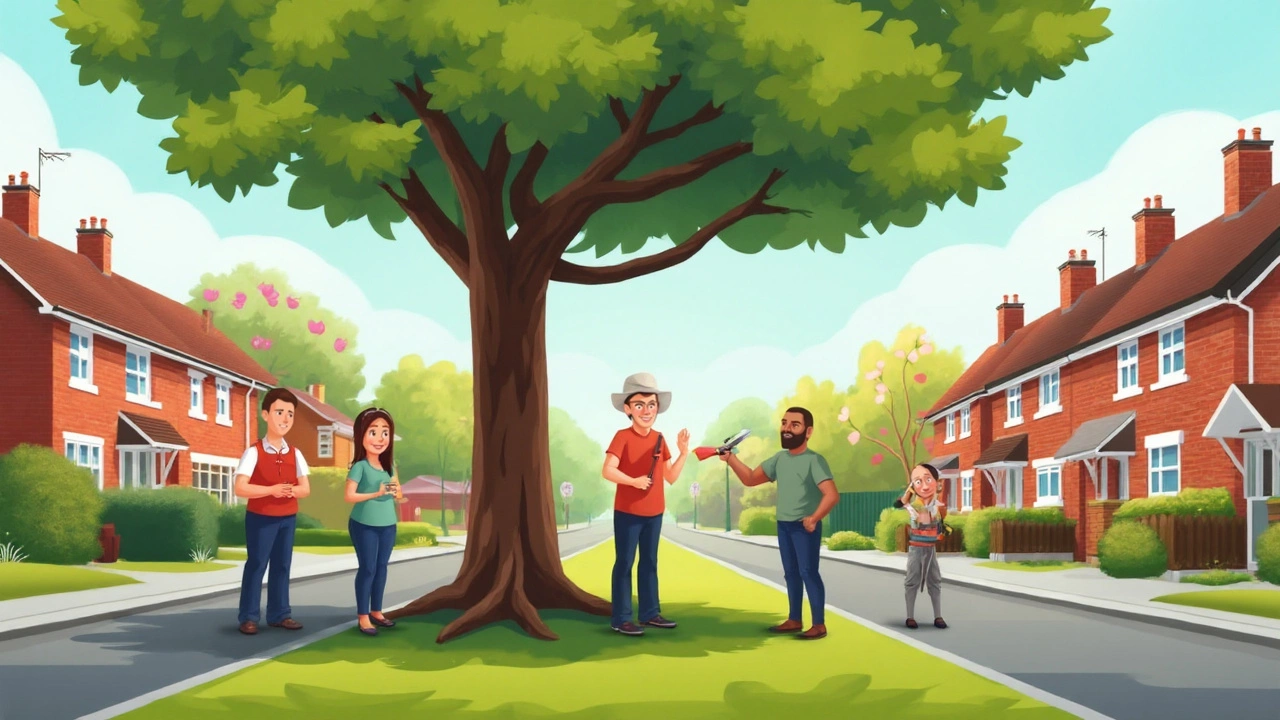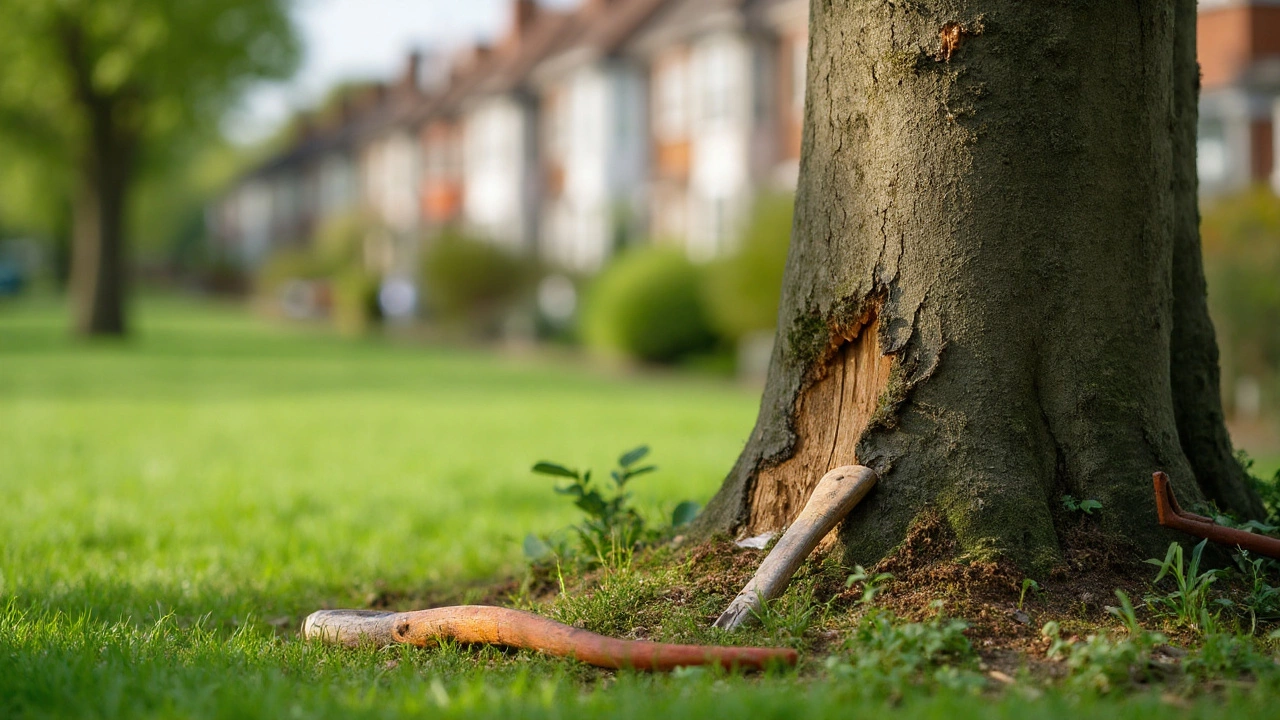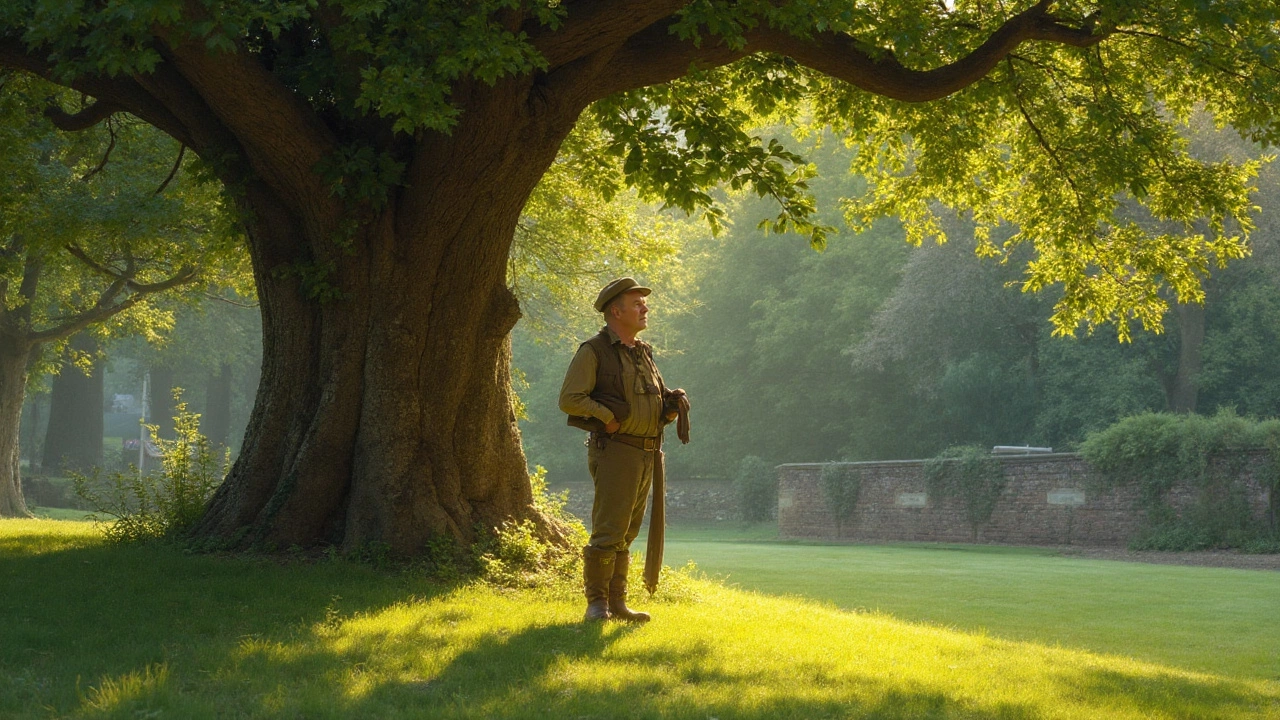Ever walked through the local park and noticed how some trees look clean and sculpted, while others look wild, draped with limbs touching the lawn? If you’ve stood in your yard holding a saw, wondering, "Should I cut these lower branches off, or am I breaking some woodland law?", you’re definitely not alone.
The truth is, trimming lower tree branches—often called limb up or raising the canopy—isn’t always as straightforward as it sounds. A lot is at stake. Get it wrong, and you might leave your tree open to disease, stress, sunburn, or awkward regrowth. Get it right, and you can improve shade, boost curb appeal, keep lawnmowers happy, and even protect your home from storm damage. So, where’s the sweet spot?
Why People Cut Off Lower Tree Branches
This practice has plenty of names—raising, limbing up, and sometimes, ‘topping’ (which actually isn’t the same thing but gets tossed around way too much). The reasons people hack away at lower branches can be deeply practical or simply about looks. For many, it starts with a mower whacking into a branch for the fifth time this month, or that branch scratching the car every time someone tries to park.
Safety pops up more than you might think. Hanging limbs can block your line of sight by the driveway or, worse, become an issue for foot traffic. Professionally, arborists talk about ‘clearance pruning.’ You see this in cities, where trees are tidied up to keep sidewalks passable or prevent branches from bashing into roofs or powerlines. It’s not just about avoiding headaches—keeping your trees trimmed beneath can actually shape how trees grow, pushing energy up and out rather than into heavy, unruly limbs near the ground.
But there’s also an aesthetic side. People like clean, park-like lawns. Trimming the lower skirt of a tree makes space below for flowerbeds, mulch rings, or a comfy bench. Even a bit of strategic branch removal can make a yard feel bigger, neater, and lighter. Fruit tree growers rely on it, too—it helps sunlight filter through, avoiding sad, shaded-out apples and peaches.
Don’t forget tree health. Sometimes lower branches have seen better days. If they’re dead, diseased, or rubbing on other limbs, getting rid of them actually helps the tree focus on what’s thriving.
The Science: How Cutting Lower Branches Affects Tree Health
Cutting off lower branches is much more than a trip with your favorite saw. Trees are living organisms with a knack for healing and adapting. Every snip you make tells the tree where to send energy, and a botched job might set your sapling or mighty oak back years.
Let’s break it down. Tree branches anchor roots and trunk against wind and help hold up the leafy crown. Slice off too many at once and you might mess with its balance. Younger trees especially get a lot of their food from those bottom branches. Removing too many can make them leggy, weak, or cause stress—just like skipping too many meals does for us.
Another little-known fact: Lower branches shield the trunk from sunburn. Yep, even trees can get scorched. Remove the branches and suddenly that smooth bark soaks up way more sun than it’s used to. This can lead to patches that crack, peel, or even want to rot. Once fungi, borers, or diseases get into those weak spots, you’re looking at a host of future problems.
But here’s a flip-side: removing a handful of scraggly, crossing, or overcrowded lower branches can improve airflow and light, which helps with disease prevention. Smart pruning lessens the chances of fungal issues and lets the healthy parts of your tree thrive.
Timing matters, too. Cutting during dormant months—late fall or winter for most trees—means less stress, as trees aren’t busily shoving energy into new leaves. Plus, bugs and pathogens looking for a free meal are less active then, giving your tree a break. Cutting when trees are in full-leaf can create open wounds right when pests are at their hungriest.

Risks of Removing Lower Branches—and How to Avoid Them
Every tree has scars—some from storms, some from eager hands and dull saws. The biggest risks kick off with over-enthusiasm. Lopping off too many branches, especially all at once, is at the top of the "Do Not" list. You strain your tree, lower photosynthesis (the way it makes food), and make it more likely to fall victim to pests or drought. You wouldn’t want surgery without anesthesia; your tree feels the stress, too.
Another pitfall? Bad cuts. Cutting too close to the trunk—removing the swollen 'branch collar'—can leave gaping wounds, which heal slow and open the door to insects and fungal infections. On the flip, if you leave a stump (called a 'hanger'), it can rot and fall off, often pulling tissue with it and damaging the trunk. Sharpen those tools and cut just outside the branch collar. Arborists preach this tip—smooth, sloped cuts heal fastest.
Beware of exposing trunks to sudden sunlight. If your yard’s tree has been shaded its whole life and you walk out one afternoon and saw every lower branch off, odds are good you’ll end up with a sunburned trunk. In the South, ‘southwest injury’ is notorious on young maples and oaks. You can protect the trunk with wraps or ‘tree guards’ during that first vulnerable year, but the safest route is gradual pruning throughout the plant’s youth.
Bad timing is sneaky. Heavy pruning right before a heatwave or cold snap? Not wise. Trees shift gears with the seasons, putting out protective chemicals, sugars, and other tools to deal with stress. Prune when it’s dormant if you have any say in the matter.
And there’s the wildlife angle. In urban and rural areas, birds often nest in lower branches. Wait until chicks are fledged—usually, winter is safest. Also, some regions have legal protections for nesting species, with hefty fines for disturbing them. Just something to double-check before you start up the chainsaw on a sunny spring morning.
Best Practices for Cutting Lower Branches
Done right, trimming lower branches can keep your tree healthy, your yard clear, and your stress minimal. Here’s a rough roadmap to doing it the smart way—these steps line up with what arborists across North America recommend.
- Plan first, cut later. Walk around the tree and picture how it’ll look without the branch. Mark the ones you want to remove with chalk or bright tape. Stand back—does it look right, or could you live with a few more for now?
- Don’t overdo it. Never remove more than 25% of a tree’s living canopy in a year. A safer range for most mature trees is 10-15%. Young trees can handle a bit more, but slow and steady wins in the long run.
- Focus on the 3Ds: Dead, Diseased, and Damaged. Start with deadwood or stubs, then move to anything that’s sick, broken, or crossing/rubbing on other branches.
- Stay clear of the trunk. Make each cut just outside the branch’s ‘collar’—the raised bit where the branch meets trunk. If you leave too much behind (‘stubs’), they’ll rot. Cut flush with trunk and you damage tissues needed for healing.
- Use the right tools. Sharp, clean pruners or saws help prevent ragged cuts and disease spread. For branches thicker than your thumb, use a silky pruning saw or small chainsaw with a steady hand.
- Follow safe cutting techniques. For big branches, start with an undercut 8-12 inches out from the collar, then a top cut further out. Let the limb fall, then remove the stub. This prevents bark from tearing down the trunk—save your tree’s "skin."
- Consider season and wildlife. Most pruning is safest when trees are dormant (late fall through early spring). Watch for bird nests if you must prune in summer.
- Monitor and support after pruning. Water your tree during dry spells, especially if it’s young or under stress. Mulch helps roots retain moisture and insulates them from temperature swings.
People sometimes spread pruning paint over fresh cuts, but university extension studies show it usually does more harm than good. The tree seals cuts naturally. Wound paint just traps moisture and can rot the tissue.
If you’ve got a really old, valuable, or worrisome tree, it’s wise to hire an ISA Certified Arborist. They know local species quirks, city codes, and can spot trouble you might miss—like root flare issues or signs of sudden oak death. It might cost a couple hundred bucks, but it beats losing a 50-year-old tree overnight.

When to Skip Cutting Lower Branches
Some situations scream "Put away the saw." For example, certain evergreens like spruce and pine need their lower branches for stability—and to avoid sunburn streaks on their main trunks. If you’re trying to shape a tree for privacy or for windbreak, those lower limbs keep things dense. Remove them, and you lose a natural screen or the tree's ability to fend off harsh winds.
If your tree is already struggling from drought, pest pressure, or disease, cutting healthy lower branches might push it over the edge. Give it a year to bounce back. If you spot mushrooms around the base, peeling bark, or excessive leaf drop, call in a pro. Those symptoms might signal rot or pests hiding inside, and more pruning could finish the tree faster than you think.
Newly transplanted trees need every leaf they can keep in the first couple of years. They’re building up energy reserves and adapting to their new digs. Only remove branches if they're truly dead or broken. Patience pays off—wait until year three or so to begin shaping for the long haul.
Certain species play by their own rules. Birch, for example, bleeds sap (water and sugars) like crazy if pruned outside deep winter. Maples, walnuts, and dogwoods do the same. Minimize wounds or stick to late dormant pruning for those types. For fruit trees, a different rulebook applies: backyard apple and peach growers might limb up moderately each season to keep fruit accessible, but always with an eye on balance and tree health.
Bottom line: If you don’t have a specific reason or if you’re unsure about ID’ing your tree, hold off. There’s no harm in letting a tree keep its lower branches if they aren’t in the way or dying off.
